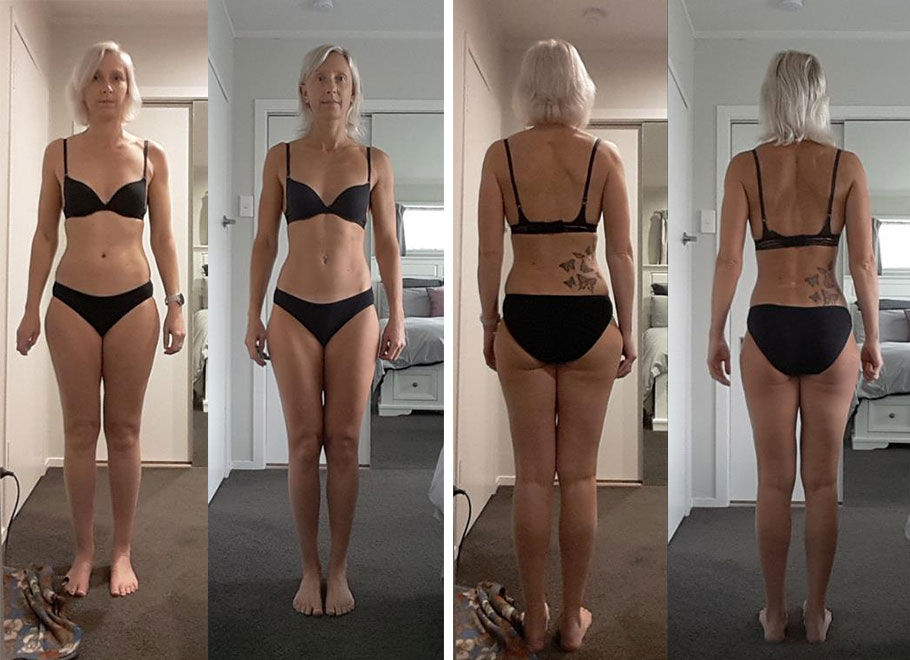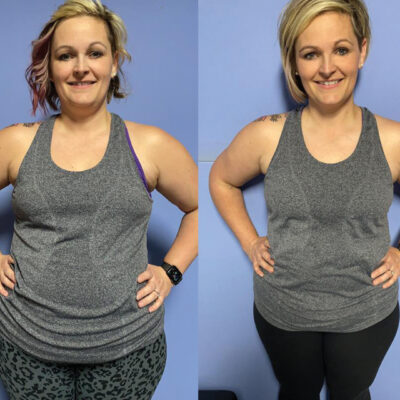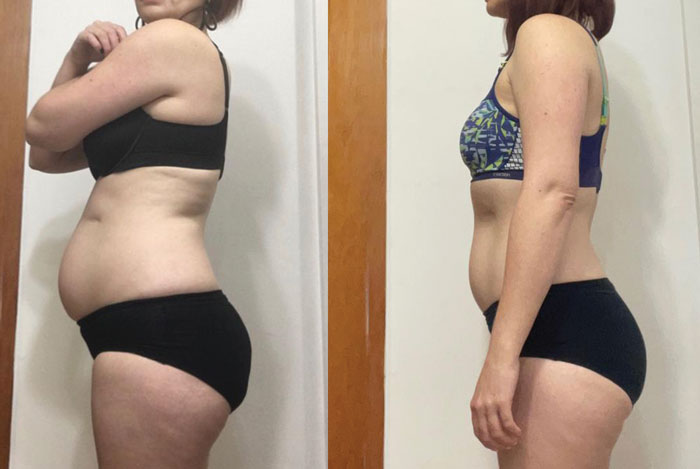Why You Need To Take Control Of Your Blood Tests
Understanding your body is essential to being healthy and flourishing as a woman.
However, like many women, you may be letting someone else – your doctor – be the decision maker when it comes to your body. This is problematic for so many reasons but in this article we’ll talk about what it means in terms of blood tests and overall understanding what is going on with your body.
I want to put you in control of your blood work because, unless you have a great doctor, you may be missing out on getting an accurate picture of your health. Here’s an example for you.
Last year my TSH, which is a thyroid test, came back out of the normal range. No one from my doctor’s office called me. They probably thought it was just above normal so no need to worry. However, having a higher TSH can be linked to all sorts of problems, some of which I was experiencing so I would have wanted to know my TSH was high. I’d also want to know my results so I could take steps to make sure things didn’t get worse.
The only reason I knew my TSH was out of whack was because I picked up my blood test results and interpreted them myself.
In this article I’ll give you some tests to ask for the next time you have blood work so that you can identify potential problems before they get worse. I also think it’s 100% necessary for you to pick up your results and look through them. It’s not hard to see when you are out of the normal range and, as my story demonstrates, doctors can miss stuff or decide for you that it’s not serious.
I’ll also talk about my recent blood tests to put it all in context for you and give you some tips for dealing with the challenge of getting your doctor to order tests.
NOTE: I’m not going to give you specific references ranges because they differ depending on the country you live in and I don’t want to confuse you (and sometimes different units are given as well). So, when interpreting your own tests, start first by looking at your lab reference ranges and then you can continue on Google if you have any further questions.
If you prefer to watch or listen, rather than read, here’s a video covering everything we’ll talk about in this article:
Blood Tests You Need To Get
TEST #1: Hemoglobin A1c (HbA1c)
The first test I want to talk about, because it’s one of the easiest ones to get, is the HbA1c. This test measures your average blood sugar over the last couple months.
It’s important because it assesses your risk for diabetes but also higher levels are associated with heart disease, cancer, Alzheimer’s, poor dental health and many other problems including overall inflammation.
Your doctor will easily order this test because it’s routine as part of an overall check up. Get it and make sure you know your results!
My Results:
My HbA1c is very low (which is good) despite having a high carb diet compared to most women (I eat between 280-300g of carbs per day). It’s interesting because we always hear about how carbs will cause blood sugar problems. Hopefully, by sharing my results with you, I can help debunk some of the fear of carbs.
One of the big differentiators, though, is that I eat mostly lower glycemic carbs and always as part of a balanced meal which is much different than eating a bag of candy or piece of cake – something I never do.
I also do a lot of things that would lower my overall blood sugar levels including lifting weights most days and having more muscle than average. I also take magnesium, curcumin and ashwagandha daily – not specifically to impact blood sugar but they have this added positive benefit. And, finally, my diet is a mix of a Mediterranean diet/plant based/vegetarian diet, all of which have been associated with better blood sugar control.
TEST #2: Ferritin (Iron)
Ferritin is also another test that’s easy to get your doctor to order. It measures the amount of iron your body is storing and it’s especially important for menstruating women to test regularly.
A lot of women supplement with iron without getting tested. But the problem is that too much iron is also a bad thing so it’s better to actually know your levels.
I’ll talk more about optimal ranges later on in this article, but I wanted to mention that if you struggle with fatigue, mood, depression, thyroid problems or heavy periods – being on the low side of the normal range for ferritin may not be high enough for you. You may still want to supplement to get yourself into the middle or higher end of normal.
My Results:
My ferritin is always very low because, since hitting my 40s, my periods are always heavy. Unfortunately, I’ve got some genetics on both sides of my family for it and I also have a fibroid which can cause heavy bleeding. I have no choice but to supplement with iron all the time and it’s a constant struggle to keep my levels up.
My levels were higher than last time I tested, but still just below the normal range.
Getting iron supplementation right is really tricky. If you are using iron supplements be sure to read my indepth guide on iron here.
TEST #3: Thryoid
Most doctors will order a TSH test if you ask but, to get a picture of what’s really going on with your thyroid you need to get additional tests – and this is where it usually gets tricky. Your doctor may not understand the additional tests and getting them may be a challenge (read the section on my results so you can see what I mean).
There are many websites dedicated entirely to thyroid problems that will explain the relevant tests in more detail, but here’s a summary of tests you want to ask for if your TSH is out of range.
-Free T4
-Free T3
-Thyroid antibodies
You can then use the values from these tests to better assess what’s going on with your thyroid. But, in my experience and from what I’ve seen with my clients, you’ll likely have to learn about thyroid lab values yourself so you can talk to your doctor knowledgeably about next steps.
My results:
A year ago my TSH came back well above the normal range so this year I wanted to test it again. I also wanted to run additional tests so I understood where the problem was coming from. I was pretty sure it was due to low iron but I wanted to run additional tests to be sure, especially because in the past my T3 had been low.
However, when I asked for additional tests, the doctor argued with me. She said, “Even if we get these tests, we don’t know how to interpret them.” I think “we” referred to doctors in general.
Can I just pause here for a second to say – WTF? This is basic stuff. So many women have thyroid problems and my doctor was saying they didn’t know how to interpret basic tests? It was also ridiculous that my TSH was above normal range last year and she refused to do further investigation.
On top of that they didn’t even call me last year to tell me. If I hadn’t picked up my lab tests and reviewed them myself, I wouldn’t have known my TSH was out of range.
I had to tell her multiple times that I knew how to interpret them before she finally agreed to order them.
I tell you this story because it’s not uncommon for women to have to argue with their doctors to get further testing. Especially when it comes to thyroid. So do some research before your appointment and go in ready to stand up for yourself. It may well be that, if you do the research, you’ll be more knowledgeable than your doctor regarding the tests.
If you are wondering, my TSH was lower than last time I tested. Given that my iron was slightly better this year and all my other thyroid tests were normal, I suspect my TSH is getting thrown around by my iron levels.
TEST #4: Vitamin D
Many countries no longer offer vitamin D testing unless you pay for it yourself. The rationale is that most people are low in vitamin D and should supplement, so testing offers no additional benefit.
I have a couple problems with this approach. First, most people don’t supplement with vitamin D until they find out they have a deficiency. Second, how do you know if your supplements are effective and if you are taking enough unless you test? Finally, given that vitamin D is such a huge player in our overall health and disease prevention, it seems crazy to ignore it.
Interestingly, in Canada, vitamin D tests may be covered if you already have certain conditions like osteoporosis. Wouldn’t it make more sense to test proactively to prevent osteoporosis? I found a report online that talks about the possible real reason Canadian provinces have stopped testing vitamin D. It says that due to increasing public awareness of the health benefits of vitamin D, costs of testing were rising too much. Restricting tests saves money.
What we don’t hear about is the cost that would be saved on health care if the public optimised vitamin D levels.
So if you want to test vitamin D, you may have to pay for it (it cost me $28). I wanted to get mine tested because I have a history of low bone density (I had osteopenia in my 20s).
Another little side thought here – don’t you find it interesting that when I had low bone density in my 20s, living in Canada where for the majority of the year you aren’t exposed to sunshine – no one – not one of the 9 doctors I saw – tested my vitamin D levels or recommended supplementing? Even more interesting, in my 20s I moved to Australia for a year and I spent most of my time in the sun. When I returned to Canada my bone density had normalized. I was told it wasn’t “medically possible” that it had happened. But it had – and I always wondered if it was in large part due to the vitamin D I got from the Australian sunshine.
My results:
My vitamin D was at the high end of the normal range so I’m happy with the result. It was the end of summer, however, and I make an effort to get at least 10 minutes of sun on my skin daily. It would have been more interesting to run the test in the middle of winter.
TEST #5: B Vitamins
It may not be necessary to test your B vitamin levels but personally I like to keep an eye on my vitamin B12 levels. You may be at risk for lower B12 if you don’t eat a lot of animal products or have conditions that may cause absorption issues like celiac or Crohn’s.
Vitamin B12 is important for your overall energy and mood. B vitamin status also plays a role in age-related cognitive impairment and decline.
Also, when you get your results keep in mind that there is a difference between optimal and normal ranges, which I will discuss in more detail below. Lower levels of B12 may be associated with brain function decline, dementia, and memory loss. So if you fall on the low end of normal, keep in mind that this may still not be an “optimal” level of vitamin B12.
My results:
I eat a mainly plant based diet which means my intake of animal products is low compared to what it used to be in the past. For this reason I like to keep an eye on my vitamin B12. My results show that I am sitting in the middle of normal but my levels are lower than the last time I tested. I’ll continue to keep an eye on them and use a good multivitamin to keep my levels up.
Optimal Blood Test Results: Why Falling Into The Normal Range May Not Be Good Enough
It’s really important that you understand the difference between optimal and normal references ranges in your blood test results.
The “normal range” is where the average person falls or the range that keeps you from dying. But the normal range isn’t necessarily the “optimal range” where you will feel healthiest, prevent disease and age well.
There is often controversy as to what is optimal. For example, many health experts suggest the TSH range should be much different than the one set by the traditional medical community.
Similarly, there is disagreement as to what’s optimal for vitamin D levels. It does seem, however, that being on the higher end of normal for vitamin D is more optimal because it could have profound health impacts. For example, higher levels of vitamin D are associated with less risk of low bone density, diabetes, colorectal cancer and breast cancer to name a few. It will also mean you have better immunity and significantly lower risk of a c-section if you are pregnant.
Because of the discrepancy between normal and optimal ranges, if you are borderline normal on any test result, you may want to explore whether you would feel better if you moved yourself into an optimal range. To find the optimal range, you may have to spend some time on Google digging into your specific situation.
Make Sure You Take Control Of Your Blood Tests
Go into your doctor’s appointment knowledgeable about what tests you want. It pays to do some research before you go in and don’t be afraid to stand up for yourself.
Pick up your test results. Most women never do this. Have a quick scan through for anything that is out of the normal range – but also anything that falls at the lower or higher end of normal. Find out if that’s a good or possibly problematic place to be in the range. If you aren’t sure about your results, book an appointment with someone who can help interpret them and is knowledgeable about the optimal ranges.
If you have questions about these tests or anything you read here, hit me up in the comments of the YouTube video linked in this article. I will answer you there!
You May Also Be Interested In These Articles
What Causes Low Iron – How To Get Your Energy Back
Your Complete Guide To Period Pain








